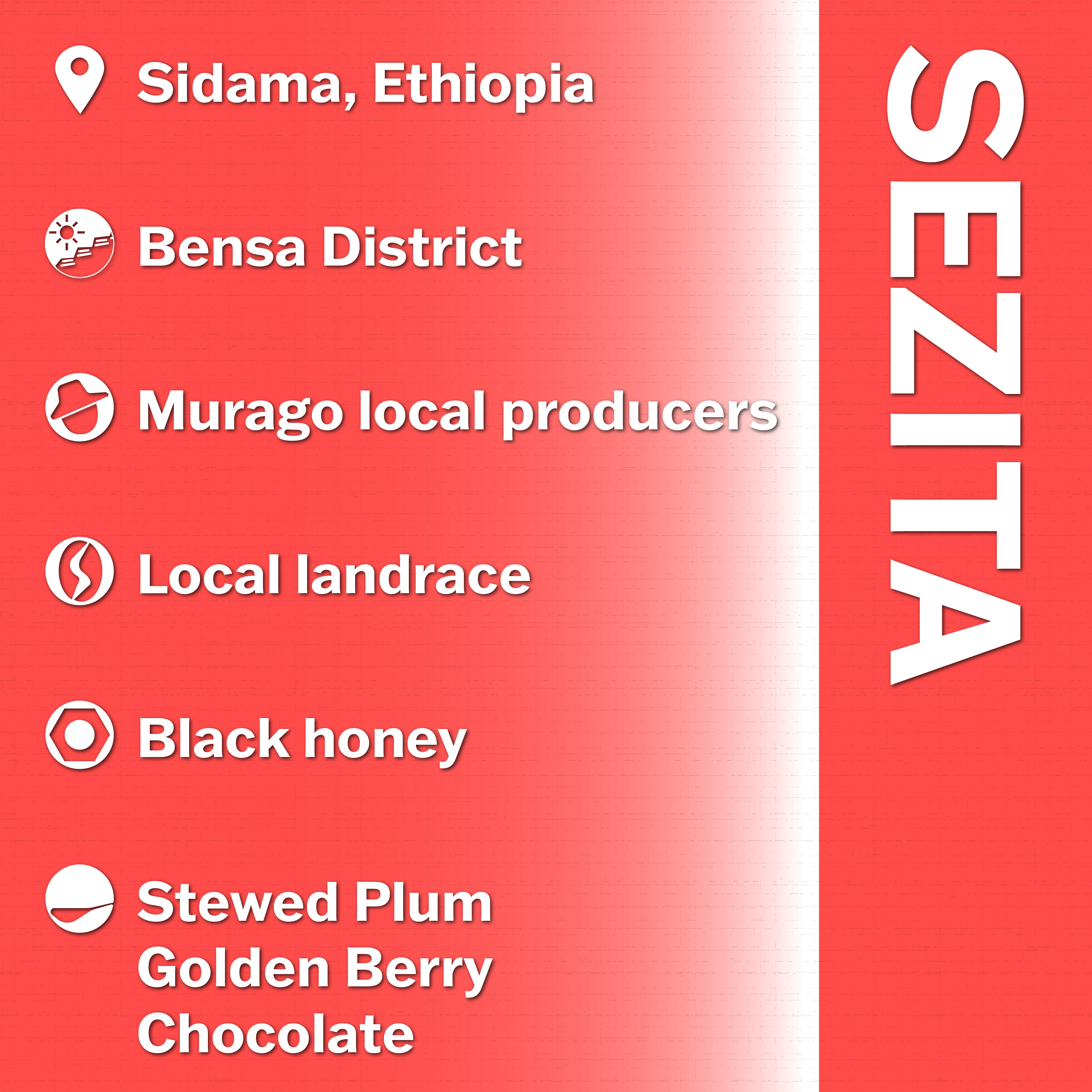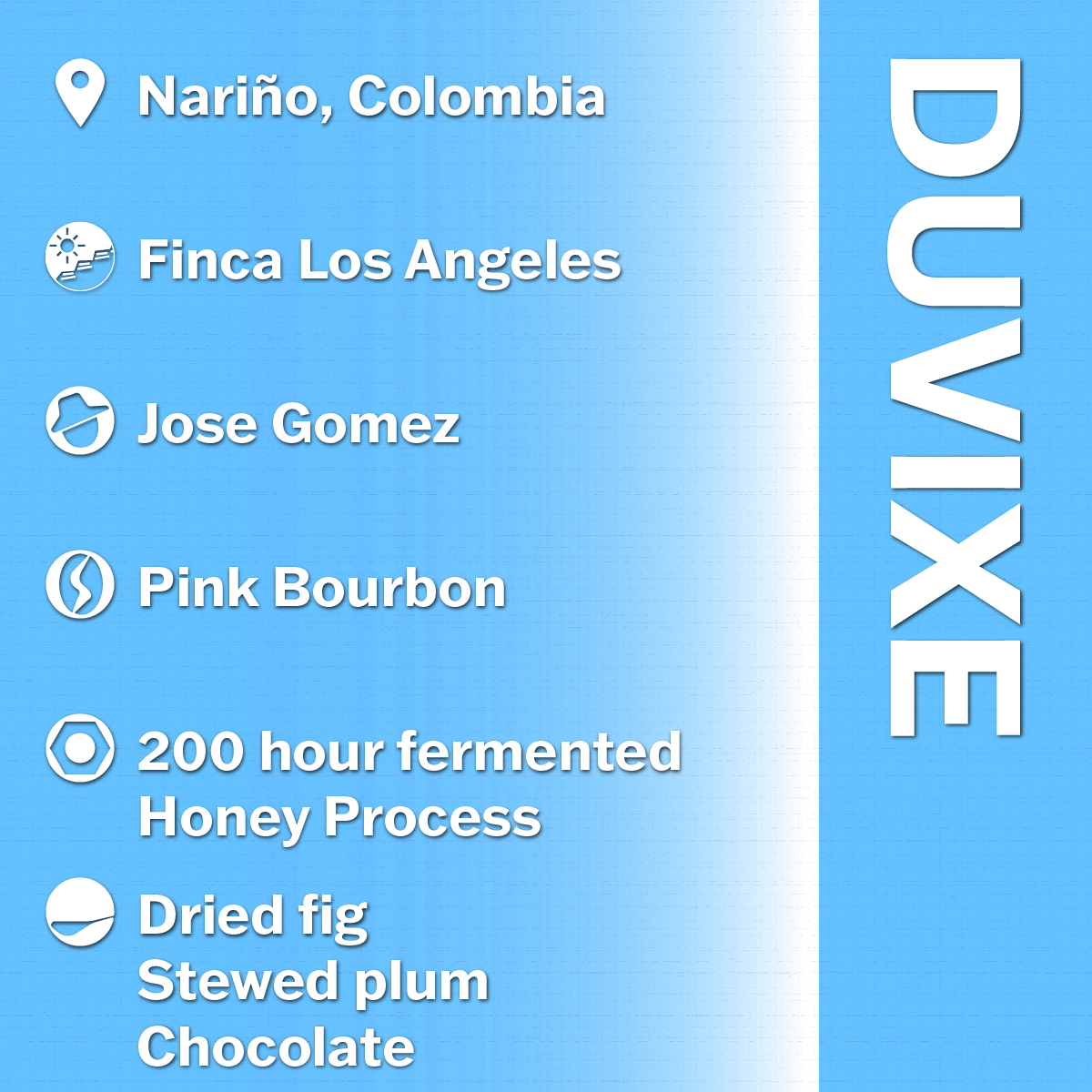 Image 1 of
Image 1 of


Murago Black Honey
SEZITA – red fruit flavours with exotic notes of tropical fruits
Region // Murago, Bensa, Sidama, Ethiopia
Varietal(s) // Local landrace
Fermentation // Open tank fermentation post depulping
Drying // Shade drying, Black honey process
Altitude // 1900 masl
Drying time // 14 days
SEZITA – red fruit flavours with exotic notes of tropical fruits
Region // Murago, Bensa, Sidama, Ethiopia
Varietal(s) // Local landrace
Fermentation // Open tank fermentation post depulping
Drying // Shade drying, Black honey process
Altitude // 1900 masl
Drying time // 14 days
SEZITA – red fruit flavours with exotic notes of tropical fruits
Region // Murago, Bensa, Sidama, Ethiopia
Varietal(s) // Local landrace
Fermentation // Open tank fermentation post depulping
Drying // Shade drying, Black honey process
Altitude // 1900 masl
Drying time // 14 days

BLACK HONEY PROCESS
ZEM founders pioneered the introduction of various honey processes in Ethiopia, including Yirgacheffe, long before they were ready for export. Back then, they engaged with national and regional officials, educated producers and washing station owners, secured coffee quality approvals, and brought buyers to showcase the market potential for these processes. Today, honey processes are widely embraced and continue to shine. Their team has been involved in producing these coffees on-site during the harvest and processing season to ensure every detail is meticulously handled.
BENSA DISTRICT
The Bensa district is situated within the renowned coffee-producing region of Sidama in Ethiopia. Coffee from this area is celebrated for its high-quality coffee beans and distinctive flavour profile, which can include floral notes, fruity undertones, and a vibrant acidity. Bensa is characterized by its ideal coffee-growing conditions, including high altitudes, fertile soil, and suitable climate. There are two distinct rainy seasons: Belg, the short rainy season from late February to May, and Kiremt, the main rainy season from June to September.
PROCESSING & DRYING
Post-harvest, the Black Honey coffee cherries undergo quick hand sorting to ensure consistent colour. They are then placed in float tanks where lower-density cherries are skimmed off for lower-grade uses, while higher-density cherries sink and are selected for further processing. A second hand sorting ensures uniformity before pulping. For honey processed coffees, a calibrated disc pulper is used to control pulping speed and minimize damage, preserving mucilage before drying.
After pulping, the parchment for honey processing undergoes brief fermentation. The mucilage-rich beans are then dried slowly on shaded beds with good airflow, extending the drying time by 4 to 5 days. This method ensures even moisture distribution and precise water activity. Although shade drying offers better control than sun-drying, it requires careful timing to cover the parchment properly. Consistent drying is essential for high-quality honey processed coffees.
COLOR CLASSIFICATION
The terms Black, Red, and White honey refer to the parchment color. Black honey coffees have black splotches from heavy mucilage, Red honey has fewer, redder splotches, and White honey coffees have minimal mucilage, appearing yellow or white.




